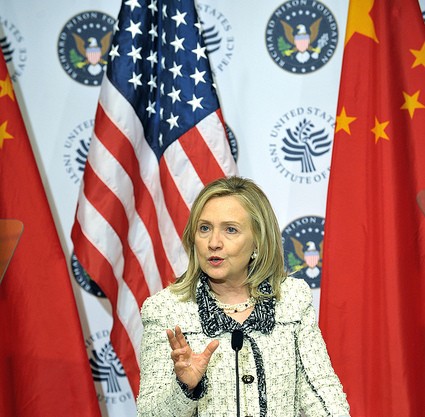This confusion has mattered little in the past nine years because the current Chinese government is hostile toward the market. The political transition scheduled for October 2012 might change things. The natural expectation after an extended period of statism is for reforms to be mild. But, if reforms do occur, both history and the existing policy mix suggest that they are likely to be dramatic.
After years of stagnation on the economic policy reform front, there was a rush of Chinese economic-reform proposals in early 2012. The pro-state government led by Hu Jintao and Wen Jiabao is on its way out, to be replaced by unknown quantities like Xi Jinping. The reform camp, led typically by the People’s Bank of China (PBOC), correctly sees the transition as an opportunity.
The person doing the most talking is Wen himself, who has been calling for an end to state monopolisation of key sectors such as banking. But Wen lacks credibility. After his predecessor Zhu Rongji tried to shrink the state sector, the state giants that Wen now criticises re-emerged and prospered under his own leadership.
Elsewhere, the PBOC has been inching forward with external financial changes, including widening the yuan’s formal trading band against the dollar and broadening the uses of the yuan in two-way investment. The central bank is selling the nationalist line that a global power must have a global currency while minimising the fact that a truly global currency requires money to move freely in and out of the country — that is, China must have an open capital account. This would be a dramatic shift as it would diminish the government’s control of interest rates.
Perhaps most importantly, Wen’s likely successor as premier, Li Keqiang, linked himself to a report — co-authored by the World Bank and the Development Research Center, an arm of China’s cabinet — that calls for resurrecting reforms that have fallen by the wayside. The report’s objectives would be far too ambitious if the current government were staying in power, but it may not be so if the incoming government is less statist.
The economic pattern over the past 30-plus years shows fundamental shifts, positive and negative: granting limited property rights to farmers in the late 1970s was a revolutionary change; the Tiananmen-driven economic recentralisation was brief but stark; Deng Xiaoping’s southern tour in 1992 was neither modest nor cautious; and Deng’s death and the ascent of Zhu to the premiership in 1997–98 triggered an attack on the state sector and a much more serious approach to WTO accession.
When the current government took office in 2002, new policy moved sharply away from the market. The idea of state firms as national champions was fully embraced, lending by state banks sharply increased and, crucially, an imbalance between investment and consumption appeared. Market reform has been almost completely absent since. Historical evidence suggests it is all or nothing: substantial market reform or primacy of the state.
Current conditions indicate the same. The various ills plaguing the economy have become too entrenched to be addressed by half measures. Impressive talk will neither curb state monopoly power nor liberalise interest rates; these require a decisive turn away from the state to the market.
The US was blindsided by the shift from a Chinese government committed to market reform to one staunchly opposed to it. Now, it may be that the US is unprepared for a positive change, which would offer immense opportunities and, once clearly underway, would also call for incentives from the US side. These could include presidential renunciation of sanctions based on exchange rates and an improved investment environment for Chinese firms in the US.
The safe bet is that no change will materialise. But if one does, it is unlikely to be subtle, and the US should prepare for it. The US Trade Representative and the Department of Commerce should request a specific calendar for the announced ‘de-monopolisation’ of major sectors, demanding details regarding timing, market shares, and eligible participants.
Domestic financial liberalisation is another major possibility. Interest rates could be directly liberalised, but permitting foreign capital to participate fully in the interbank market, or enabling money to leave the country more freely, would also greatly enhance the influence of market forces. The Department of the Treasury should request timetables for interest-rate and capital-account liberalisation.
Good US policy toward China also requires the business community to contribute: the faster US companies and business organisations recognise any authentic change and adjust their strategies accordingly, the better for both the US and the bilateral relationship.
The US is all too ready to bang heads with another statist Chinese regime. History says that if there is reform, it will be powerful rather than modest. The administration, Congress, and the business community should prepare for that possibility too.
Derek Scissors is Senior Research Fellow at the Asian Studies Center, The Heritage Foundation.
A longer version of this article was first published as a Heritage Foundation Issue Brief.

